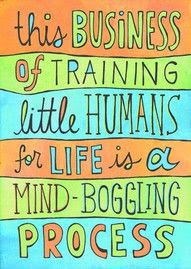ISTE Standard #4 requires learners to use critical thinking skills to plan and conduct research, manage projects, solve problems, and make informed decisions using appropriate digital tools and resources.
My question: What age-appropriate digital tools might help young learners cultivate critical thinking and problem solving skills in the classroom?
The Global Digital Citizen Foundation is a rich resource I dove into more deeply in my search to answer this week's question, and I found this article by the GDC Team extremely helpful:
The piece is organized according to which digital critical thinking tools help learners in different areas: remembering, understanding, applying, analyzing, evaluating, and creating.
My biggest takeaway from this week's research is actually more about my own understanding of what critical thinking is for a digital generation. The Global Digital Citizen Foundation helped me make important parallels between the learning I did as a child and the ways kids in 2016 still develop critical thinking and problem solving skills, but through the lens of a digital native.
Digital natives, a term I understood and identified with instantly, but had not heard before, are members of the generation having grown up in this incredible technological boom. My family got AOL junk mail beginning in fourth grade, when I first logged onto the Beanie Baby website, clogging our family's phone line for hours as the photos of stuffed elephants loaded onto each page. I'm the same age as Mark Zuckerberg--I remember sitting in my college residence hall and submitting my request (invite only, back then!) to join this new online community for college students only: Facebook. It was a glorified phone book at the time, but the rest is history. My students, however, will never know a time when the phone book actually came to my doorstep, and most will have their own smartphones long before they can drive. They are true digital natives.
So their learning will look a lot different.
Check out this massive list of digital and online actions that correspond to Bloom's Taxonomy. I had never thought of commenting on a blog post as a form of analyzing (critical thinking), but of course it is! Animating is creating, mind mapping is analyzing, and tweeting is understanding (not a statement I could call gospel truth, but it is possible.)
Bates's writing on the difference between technology and media also helped clarify some of these same questions for me. He says, "In judging the value of a technology, we need to look more closely at the ways in which it is being or could be used. In essence this means focusing more on media--which represents the more holistic use of technologies--than on individual tools or technologies themselves, while still recognising that technology is an important component of all media" (Bates, n.d.). Basically, a cool app means nothing on its own. Put it in the context of enriching educational media, and it could be magic.
I still don't believe the youngest students need more than a few minutes of screen time exposure every day--there's just too much literature (Reddy, 2015) warning us of the damage of such high doses--but I can now see all the ways my digital teaching strategies will expand their skills sets. It feels like a real breakthrough for me, and it feels good!
References
Bates, A.W. Understanding technology in education. In Teaching in a digital age (6). Retrieved from: https://opentextbc.ca/teachinginadigitalage/chapter/8-8-understanding-the-foundations-of-educational-media/
Global Digital Citizen Team. (2016, January 11). 26 Critical thinking skills aligned with Bloom's Taxonomy. Retrieved from: https://globaldigitalcitizen.org/fostering-critical-thinking-skills-with-online-tools
Global Digital Citizen Team. (2016, January 11). 26 Critical thinking skills aligned with Bloom's Taxonomy. Retrieved from: https://globaldigitalcitizen.org/fostering-critical-thinking-skills-with-online-tools
Reddy, Sumathi. (2015, October 15). Pediatricians rethink screen time policy for children. Wall Street Journal. Retrieved from: http://www.wsj.com/articles/pediatricians-rethink-screen-time-policy-for-children-1444671636




